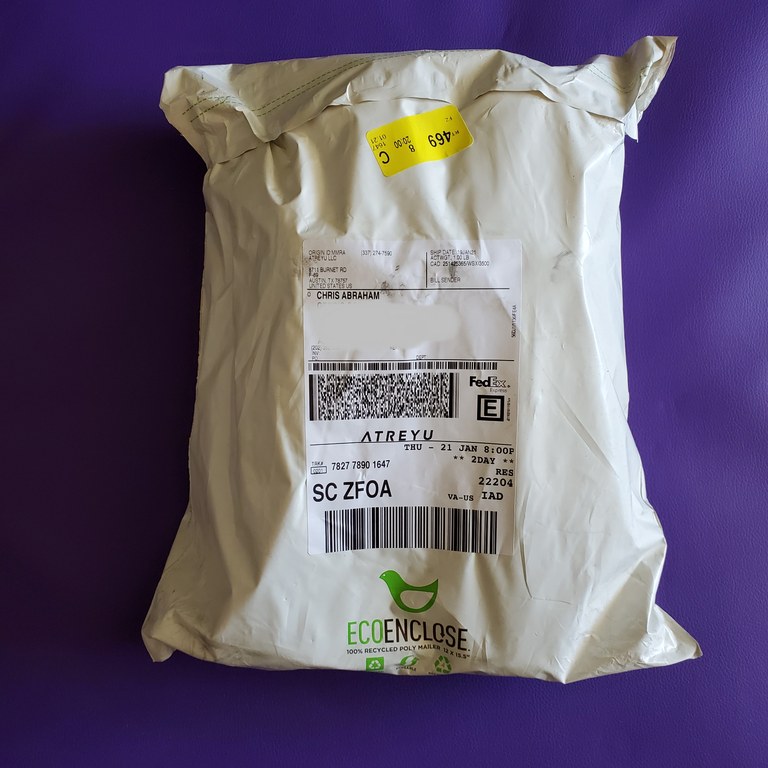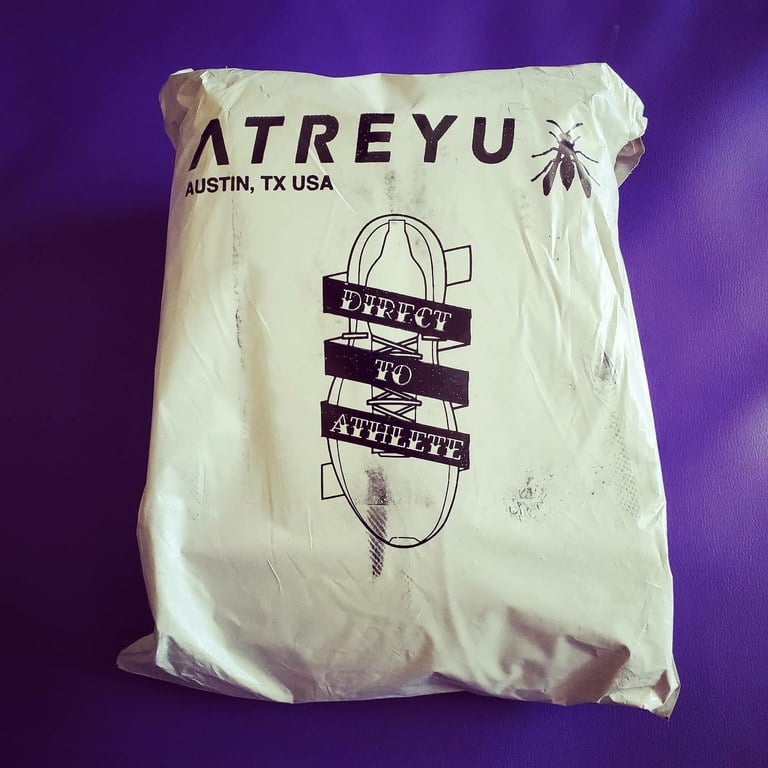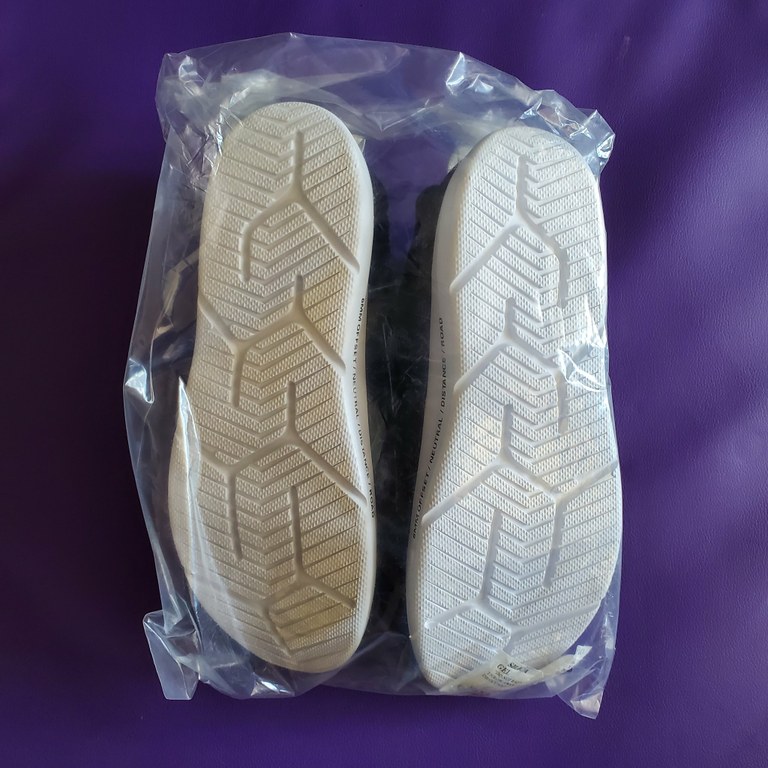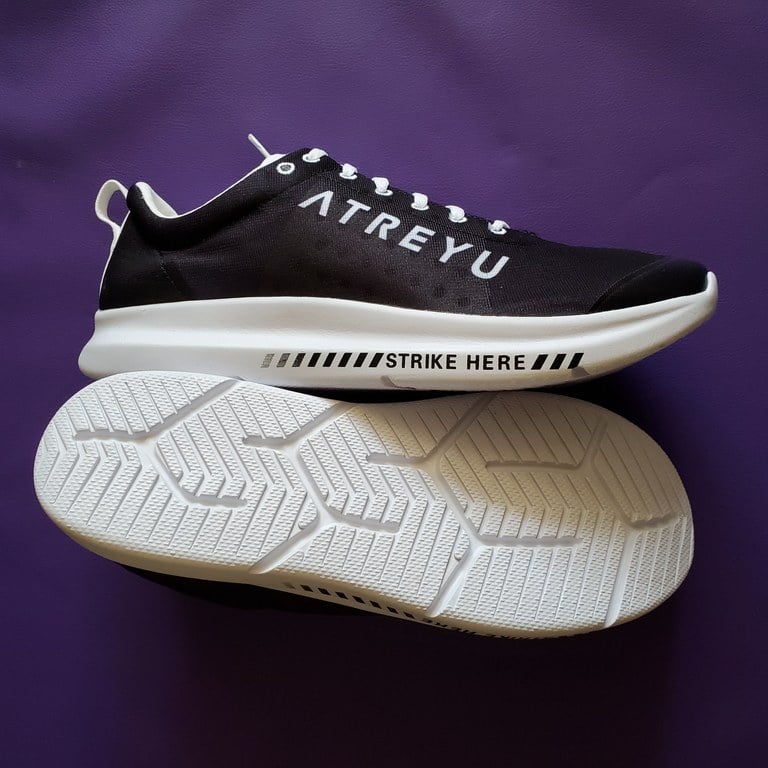I finally got my feet into a pair of Atreyu running shoes
| filed under: Atreyu Running, Running Shoes, First Impressions, Review, Running, Jogging, Atreyu, andard Issue Colorway #2UPDATE: Even though they wear out fast and they no longer have a subscription model and they are $75/pair, they're still the lightest and the most comfortable. They end up being $90 delivered, which is still a very good price for a new pair of extremely light, extremely comfortable, performance daily trainer running shoes. I just bought a new pair of their Base Model version two in garish orange.
Was it worth the wait? I was afraid it wasn't when I first laced them up and walked around. At first, the very basic outsole felt really hard. However, I am committed and I am glad I did. That was yesterday; today, they have softened up and feel really simple and really good. I can work with this.
They Fit Like a Glove
Actually, in terms of how they fit, the upper reminds me of Feiyue Tiger Claw martial arts shoes. They're not made of canvas or cotton, like a pair of kung-fu martial arts shoes, but they are made of a very simple textile reminiscent of a pair of 80s Keds. The lockdown is really good but it's not because of any padding at all. Atreyus are the antithesis of built-up, Cadillac-upholstered, padded shoes from Saucony, Brooks, Mizuno, and Asics. There are no flywire or flying buttresses or plates or Continental rubber or overlays or underlays or anything like that. Bit I don't think it needs it. I lie. There is an overlay at the toe and there's a sweet pull-tab at the back (Jami-approved) and there's a nice suede-like material on the pull tab and on the tongue. As you'll see, there are extra eyelets for the runner's knot, but when I used that, I easily cinched the shoe too tight and had to back down, undoing the runner's knot and just tying it like regular shoes. There's nothing special about the laces and they could have been taken from a pair of Keds or my Tiger Claws, but they get the work done and are simple cotton.
I Have Not Run in them Yet
I plan to do my first run in them tomorrow morning. I have only used them so far on my treadmill desk, primarily because I wasn't sure about the EVA foam. Whatever "durometer" means I was afraid the durometer was too hard and not soft enough. Like I said, though, the low drop big-block of vanilla EVA foam really loosened up. Like some Hoka One One shoes like my older Bondis, the midsole acts as the outsole. While we'll see how the midsole/outsole wears, this shoe isn't designed to last me 300, 400, or 1,000 miles, like I feel like some Adidas runners can do, but they only need to last for two months of my slow jogging, my slow running. I am very heavy right now (6'3" and 350lbs) so we will see how they wear and if I break them. Hopefully, in a year's time, I will be a much lighter runner. Until then, I will do my best to report what I discover as I commit to a series of Atreyus, across a series of colorways, as my daily trainers. I am not training for anything, I am just pursuing a simple running practice. Wish me luck!





Featherweight neutral running shoes suitable for training and racing.
- one-piece form-fitting upper
- one-piece EVA midsole
- 6 oz (Men's size 9)
- 15.5mm/21.5mm stack height
- 6mm offset
- 5mm sock liner
- lateral and medial stability weld
- minimal heel counter
Glossary of Terms:
-
Atreyu Running: A brand of running shoes.
-
Standard Issue Colorway #2: A specific color option or style of Atreyu running shoes.
-
Subscription Service: A service where customers subscribe to receive regular shipments of a product at a set interval, often with a discount or other benefits.
-
Kofuzi: Likely a reference to a YouTuber or influencer who reviews running-related products.
-
Seth James DeMoor: Another likely reference to a YouTuber or influencer known for running-related content.
-
Base Model: The basic or standard version of a product, in this case, a type of Atreyu running shoe.
-
Outsole: The outer sole of a shoe that makes contact with the ground.
-
Durometer: A measure of the hardness of a material, often used to describe the firmness or softness of shoe cushioning.
-
EVA Foam: Ethylene-vinyl acetate foam, a common material used in shoe midsoles for cushioning.
-
Low Drop: Refers to the height difference between the heel and forefoot of a shoe, with a low drop indicating a minimal height difference.
-
Hoka One One: A brand known for its maximalist running shoes with thick cushioning.
-
Midsole: The layer of cushioning material between the outsole and the upper of a shoe.
-
Drop: The height differential between the heel and forefoot of a shoe.
-
Colorways: Different color options or designs available for a specific product.
-
Runner's Knot: A specific way of tying shoelaces to prevent them from coming undone during a run.
-
EVA Foam: Ethylene-vinyl acetate foam, commonly used in shoe midsoles for cushioning.
-
Adidas: A well-known sportswear and footwear brand.
FAQ (Frequently Asked Questions):
-
What is Atreyu? Atreyu is a brand of running shoes.
-
What is Standard Issue Colorway #2? It appears to be a specific color or design option for Atreyu running shoes.
-
What is the subscription service mentioned in the text? The subscription service mentioned allows the author to receive replacement pairs of Atreyu running shoes every two months for a fixed fee.
-
Why did the author hesitate to try the Atreyu running shoes at first? Initially, the author found the outsole of the shoes to be hard, but they softened up after a short period of use.
-
How does the fit of Atreyu running shoes compare to other brands? The author mentions that Atreyu shoes have a simple upper with good lockdown but lack excessive padding, making them different from some other well-known brands like Saucony, Brooks, Mizuno, and Asics.
-
Why did the author use the term "durometer" in the text? The author used "durometer" to describe the hardness of the shoe's EVA foam midsole, expressing initial concerns about its firmness.
-
How does the author plan to use the Atreyu running shoes? The author intends to use them for daily jogging and running.
-
What does "low drop" mean in the context of running shoes? "Low drop" refers to a minimal height difference between the heel and forefoot of a shoe, which can affect the running gait.
-
What is the author's current weight and how does it relate to the choice of running shoes? The author mentions a weight of 6'3" and 350 lbs, indicating that they are a heavy runner and are interested in seeing how the shoes wear under their weight.
-
Is the author training for any specific event or race with these running shoes? No, the author mentions that they are not training for anything specific but are pursuing a simple running practice.

